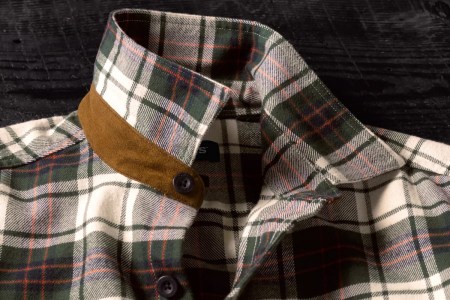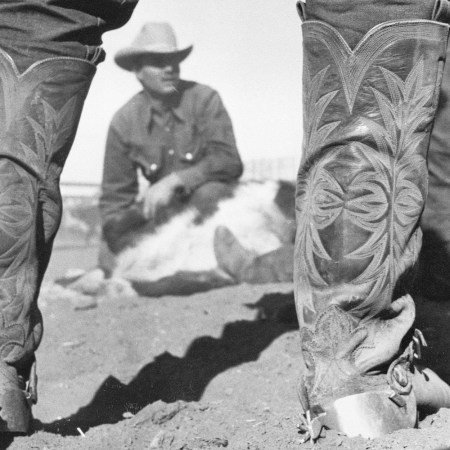Nota bene: All products in this article are independently selected and vetted by InsideHook editors. If you buy something, we may earn an affiliate commission.
Most people are familiar with Columbia Sportswear as a performance-meets-lifestyle brand that makes gear for an outdoorsy life. Fleece zip-ups, puffer vests, winter jackets, you get the picture. So when they invited me to a far-flung destination just below the Arctic Circle to test their new Omni-Heat Arctic line, I was intrigued. I’d known about their innovative Omni-Heat technology, which uses thermal reflective tech, though I’d always thought it better suited for chilly coffee shop outings than confronting the frigid landscapes of Iceland.
Unless you’re a regular glacier trekker, it’s easy to see why. We’re in a golden age of performance menswear, with brands blending functionality and street-ready style, often blurring the lines between actual performance and simply good-looking clothes. But Columbia has carved out a unique space: pioneering proprietary tech, crafting handsome garments and offering a rich history to boot. If Omni-Heat can help insulate the first U.S. lander to touch down on the Moon in 50 years, you can bet it’ll work for you, too. However, the Omni-Heat Arctic line goes further, bringing serious warmth while maintaining accessible prices and stylish silhouettes.
Now let’s trek into Iceland with Columbia’s latest and greatest pieces and delve into the tech behind them.

First, a bit of history for context.
In 1938, Columbia got its start as a hat distributor: German immigrants started the modest Portland, Oregon-based outfit and named it the Columbia Hat Company after the region’s iconic river. In the 1970s, their daughter, Gert Boyle, took the reins and expanded the brand’s reach by manufacturing gear rugged enough for the Pacific Northwest’s unpredictable weather. This era saw the launch of the memorable “Tough Mother” ads (some of you might recall them), which reflected their no-nonsense approach and helped solidify the brand’s reputation for durable, functional and affordable outerwear with a touch of wit and charm — a spirit that’s kept the brand close to outdoor enthusiasts’ hearts for decades. Today, Columbia is a global powerhouse driven by a passion for the outdoors (something I saw firsthand with the team) and proprietary tech that keeps you warm, dry and protected.

Omni-Heat
If you’re familiar with performance gear, you probably know Columbia’s Omni-Heat technology. Launched in 2010, this innovative tech keeps you warm without the bulk: tiny metallic dots inside jackets and gear reflect body heat back toward you, creating a reflective barrier that holds warmth while letting moisture and excess heat escape. It’s built for high-performance, cold-weather ventures where staying warm without overheating is key. And Columbia hasn’t stopped refining it — recent updates have made Omni-Heat even lighter and more effective. Recently, it leaped into space, helping insulate a U.S. lunar lander via a collaboration with space exploration company Intuitive Machines.
Review: There Are Tons of Flannel Shirts. What Makes This One “Perfect”?
My six-week test of the Perfect Flannel Shirt from Orvis proved how big a difference a bunch of small details can makeOmni-Heat Arctic
Like the old ads imply, and true to its legacy, Columbia likes to innovate, not stagnate. This past September, I had the chance to test the brand’s new Omni-Heat Arctic line in Iceland. This insulation technology is inspired by polar bears’ unique natural adaptations: translucent fur and pigmented skin. Designed with biomimicry in mind, Omni-Heat Arctic uses solar-capture insulation, maximizing warmth in extreme cold by mimicking how Arctic wildlife thrives in frigid temperatures. Available in both fleece and puffer jackets, this new tech is genuinely impressive — so let me wax (a bit) poetic here.

The Testing
The first garment I wore was the Arctic Crest Down Jacket. My initial impression? It’s incredibly lightweight — you can actually pack it down into one of its own pockets, and it feels like it weighs nothing. But don’t let the weight fool you; this puffer is seriously warm. For most of the day, I only needed one base layer underneath, and I felt comfortable. Granted, I’m the type who heats up quickly, but with a proper base layer, this jacket would keep just about anyone warm in cold weather. During a (long) hike to the Thrihnukagigur volcano on the first day, the puffer kept me warm without overheating, even during challenging parts of the trek. Style-wise, it doesn’t disappoint. The blue hue (it’s also available in grey and black) and high-quality feel of the fabric add a touch of luxury that you wouldn’t expect at this price point ($260). You could splurge on a designer puffer at five times the cost, but it likely wouldn’t match the warmth or performance. Plus, this jacket has character — it’s the kind of outerwear that isn’t afraid to get a little rugged.

On the second day we headed to the Solheimajokull glacier, so rocking the Arctic Crest Sherpa Fleece Jacket felt only fitting — going full polar-bear mode. With the blood pumping from our hike and mild weather (for Iceland), all I needed was a base layer and the fleece to stay warm. The Omni-Heat Arctic technology turned the layer from your standard utilitarian fleece into a genuine piece of adventure gear. Offering zippered pockets and a hood, this polar bear-inspired tech provides breathable, high-efficiency warmth without bulk. While I wouldn’t recommend it for downpours (it is fleece, after all), its performance and style are great for everyday wear.

Columbia excels not only in heat-retention tech but also in waterproofing. We spent half of day two exploring the intense Seljalandsfoss and Skogafoss waterfalls, where I wore the OutDry Extreme Wyldwood Shell Jacket and matching pants. To say the OutDry Extreme technology kept me dry — while still being breathable — is an understatement, as water comes from all angles when navigating these falls. The OutDry Extreme membrane is a fully seam-sealed, impenetrable exterior with a soft, moisture-wicking interior. It features adjustable cuffs and a drawcord-adjustable hem to help seal out the elements further, and it’s incredibly lightweight, packing into itself for easy storage. Built with four-way stretch, it moves with you and has a surprisingly soft touch, often lacking in high-performance waterproof textiles. While most people might not need this level of waterproofing daily, this jacket and pant combo is a no-brainer for anyone living in a rainy climate or regularly partaking in similar excursions.

And it’s not just the outerwear we tested — the Omni-Heat Infinity Baselayer is no joke when retaining warmth. With its high-tech gold cells, the inside of this long-sleeve shirt feels almost space-age. The advanced thermal-reflective lining holds heat exceptionally well, making it a powerhouse undershirt you could easily pair with a light jacket in cold conditions. In fact, it’s almost too effective; wearing it under anything more than a light layer could make you overheat quickly. So, consider this your go-to for freezing weather or as a single layer under a jacket.

Oddly enough, one of my favorite pieces from all the gear I tested was the brand-new Konos TRS OutDry mid-top sneakers. I liked them so much that I recommended them to my best friend, who bought a pair — and now he’s raving about them too. Launched this year, these shoes feature Columbia’s award-winning Omni-MAX footwear system, which combines adaptive cushioning, enhanced stability and increased traction for almost any terrain. The Techlite+ midsole provides excellent cushioning with lightweight, responsive foam. Columbia stuffed a ton of research knowhow into these, and it shows.
I wore them throughout the trip and was impressed by their comfort and excellent grip. They also keep your feet warm and dry. Unlike many waterproof sneakers that rely on a sock-like barrier (which could trap moisture), these use a waterproof membrane bonded directly to the outer shell, so feet stay dry even when splashing through water. They also have a very au courant sneaker-hiker vibe that looks just as good on city streets as on Icelandic terrain. Big kudos to the Konos.


After spending a week in Iceland, I can attest that the brand’s new Omni-Heat Arctic gear and Omni-MAX footwear systems live up to the hype. It’s fitting that Columbia draws inspiration from nature, much like military tech often looks to Mother Nature for new innovations. You can’t outsmart nature, so Columbia pays homage to her mysteries by combining natural principles with proprietary tech to keep us all more comfortable on Earth.
From outerwear and accessories to base layers and sneakers, Columbia’s innate performance and accessible style will keep you warm all season — and they make great gifts for the outdoorsy folks in your life. Below are most of the pieces I wore in Iceland, from a brushed-cotton flannel for everyday wear to the Arctic Crest puffer (probably my favorite outerwear piece) to their thermal socks. Investing in a few key pieces while winters (still) get cold is a smart move — whether you’re in Iceland or someplace less picturesque.
Outerwear
Waterproof Gear
Base Layers
Additional Gear
We've put in the work researching, reviewing and rounding up all the shirts, jackets, shoes and accessories you'll need this season, whether it's for yourself or for gifting purposes. Sign up here for weekly style inspo direct to your inbox.

































